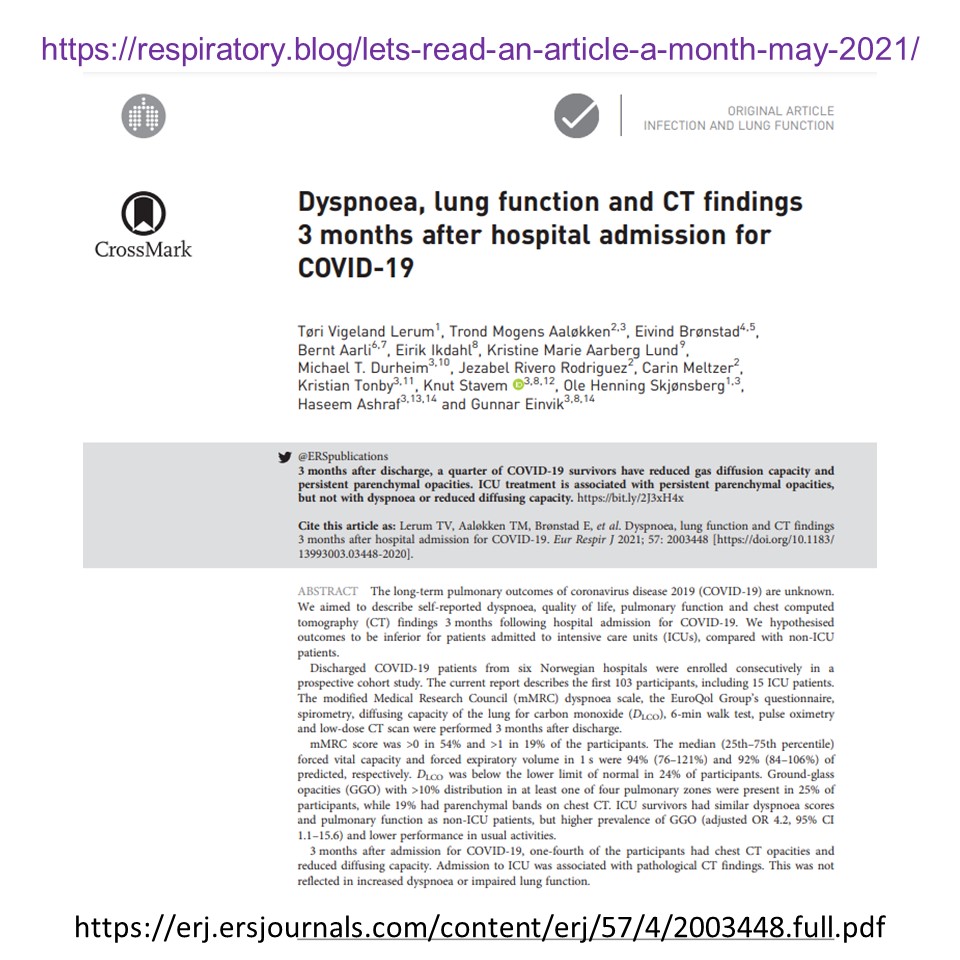
Every month I try to read an open-access article. After reading the article, I share the title and associated link with my followers. This is to encourage clinicians to read articles, stay up to date, and continue to grow.
This month I found a great piece to share with you. This one falls under the infection and lung function categories. The objective of this paper is to “ [assess] patient-reported dyspnoea, lung function, quality of life (QoL) and parenchymal opacities in chest CT scans 3 months after hospital admission for COVID-19 in a prospective, consecutive Norwegian cohort of patients with or without ICU treatment. ” [p2].
Dyspnoea, lung function and CT findings 3 months after hospital admission for COVID-19
By: Tøri Vigeland Lerum, Trond Mogens Aaløkken, Eivind Brønstad, Bernt Aarli, Eirik Ikdahl , Kristine Marie Aarberg Lund , Michael T. Durheim, Jezabel Rivero Rodriguez , Carin Meltzer , Kristian Tonby, Knut Stavem, Ole Henning Skjønsberg, Haseem Ashraf and Gunnar Einvik.
Eur Respir J 2021; 57: 2003448
Link to the pdf/article: https://erj.ersjournals.com/content/erj/57/4/2003448.full.pdf
Why this article caught my attention:
- It helped me have a better understanding of the recovery process of individuals with COVID19. There will be a lot of focus on the recovery and rehab of patients once we are done with the peak of this pandemic.
- Includes valuable information as it focuses on symptoms and various diagnostic data which includes PFT and CT scans! Check out page 3 and also Table 2 on page 5 for more information
I really hope that more studies like this will be conducted on our COVID19 patients.
How are you preparing for COVID19 Rehab? Which set of data and recommendations are you using?
Happy learning and reading!
Farzad Refahi
May 31st, 2021


